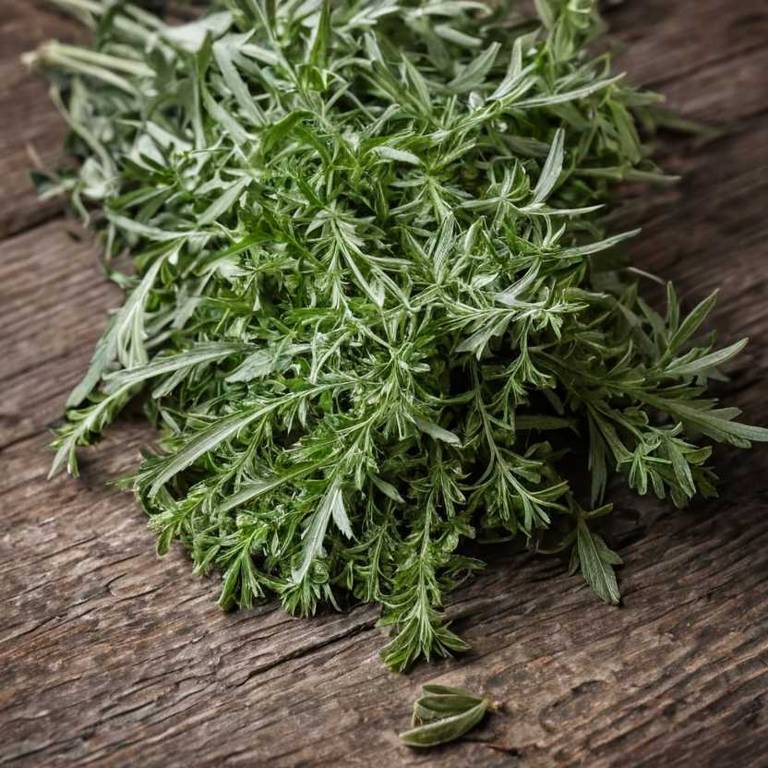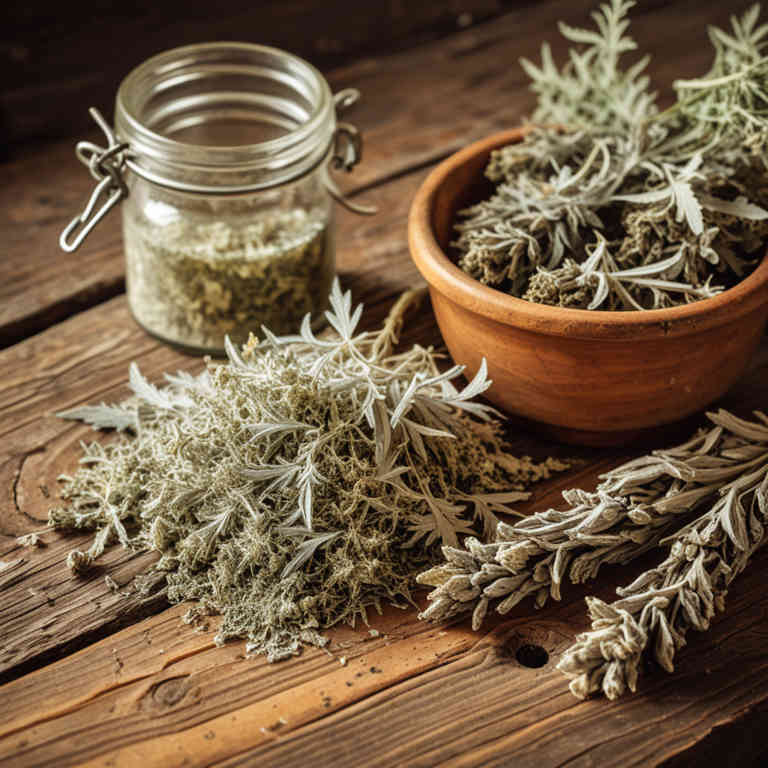10 Best Artemisia Vulgaris Preparations

The best medicinal preparations of Artemisia vulgaris are teas, decoctions, tinctures, syrups, and capsules, each offering unique benefits for health.
Teas made from dried leaves are commonly used to support digestive health and reduce inflammation.
Decoctions, which involve simmering the herb, are often employed for their stronger medicinal properties.
Tinctures provide a concentrated form of the herb for more potent therapeutic effects.
Syrups and capsules offer convenient and palatable options for regular use in treating ailments like fever and digestive issues.
Below there's a list of the 10 best herbal preparations of artemisia vulgaris for medicinal purposes.
- 1. Teas
- 2. Decoctions
- 3. Tinctures
- 4. Syrups
- 5. Capsules
- 6. Creams
- 7. Linctuses
- 8. Lozenges
- 9. Oinments
- 10. Liniments
1. Teas
Artemisia vulgaris teas is commonly used to treat digestive issues, respiratory infections, and as a natural remedy for fever and inflammation.
The most common medicinal uses of this herbal preparation include alleviating symptoms of indigestion, reducing coughing and bronchitis, and supporting the body's immune response during illness. It is also traditionally used to manage menstrual cramps and as an antiparasitic agent. The bioactive constituents responsible for its medicinal properties include compounds such as thujone, camphor, and essential oils, which possess antimicrobial, antispasmodic, and anti-inflammatory effects.
Additionally, flavonoids and tannins contribute to its astringent and antioxidant properties.

2. Decoctions
Artemisia vulgaris decoctions is commonly used to treat digestive issues, fever, and parasitic infections.
This herbal preparation has been traditionally used for its antiparasitic, antimicrobial, and antispasmodic properties. It is often employed to alleviate symptoms of gastrointestinal disorders such as indigestion and flatulence. The bioactive constituents responsible for its medicinal effects include flavonoids, terpenoids, and essential oils.
These compounds contribute to its ability to combat infections and support digestive health.

3. Tinctures
Artemisia vulgaris tinctures is commonly used to treat digestive issues, fevers, and respiratory infections.
They are often employed in traditional medicine to alleviate symptoms of malaria, although their efficacy for this purpose is not fully supported by modern scientific research. The tinctures are also used to support liver function and as a natural remedy for nausea and headaches. The bioactive constituents responsible for these effects include flavonoids, sesquiterpene lactones, and volatile oils, which have antimicrobial, anti-inflammatory, and antispasmodic properties.
These compounds contribute to the plant's reputation as a versatile herbal remedy across various cultures.

4. Syrups
Artemisia vulgaris syrups is commonly used to treat digestive issues, respiratory infections, and fever.
This herbal preparation is often employed for its antispasmodic, antiparasitic, and antimicrobial properties. It is traditionally used to alleviate symptoms of coughs, bronchitis, and gastrointestinal disorders. The bioactive constituents include essential oils, flavonoids, tannins, and sesquiterpene lactones, which contribute to its therapeutic effects.
These compounds help reduce inflammation, combat pathogens, and support immune function.

5. Capsules
Artemisia vulgaris capsules is commonly used to treat digestive issues, respiratory infections, and parasitic infestations.
They are often employed for their antispasmodic, antimicrobial, and anti-inflammatory properties. The most common medicinal uses include alleviating symptoms of indigestion, reducing fever, and combating intestinal parasites. Bioactive constituents such as thujone, camphor, and flavonoids contribute to its therapeutic effects.
These compounds work synergistically to support the body's natural defenses and promote overall wellness.

6. Creams
Artemisia vulgaris creams is commonly used to treat skin conditions and inflammatory disorders.
These creams are often applied topically to alleviate symptoms of eczema, psoriasis, and fungal infections. The most common medicinal uses of this herbal preparation include reducing inflammation, soothing irritated skin, and combating microbial infections. The bioactive constituents responsible for these effects include flavonoids, sesquiterpene lactones, and essential oils, which possess anti-inflammatory, antimicrobial, and antioxidant properties.
These compounds work synergistically to enhance the therapeutic benefits of the cream.

7. Linctuses
Artemisia vulgaris linctuses is commonly used to treat respiratory conditions such as coughs, bronchitis, and asthma due to its expectorant and anti-inflammatory properties.
The most common medicinal uses of this herbal preparation include alleviating symptoms of respiratory infections, reducing mucus production, and providing relief from persistent coughs. It is also sometimes used to address digestive issues like indigestion and nausea. The bioactive constituents responsible for its medicinal properties include flavonoids, sesquiterpene lactones, and volatile oils, which exhibit antimicrobial, anti-inflammatory, and bronchodilatory effects.
These compounds contribute to its effectiveness in supporting respiratory and digestive health.

8. Lozenges
Artemisia vulgaris lozenges is commonly used to treat respiratory conditions such as coughs, sore throats, and bronchitis due to their antimicrobial and anti-inflammatory properties.
These lozenges are often employed to alleviate symptoms of colds, flu, and other upper respiratory tract infections. The bioactive constituents responsible for these effects include volatile oils, flavonoids, and sesquiterpene lactones, which exhibit antiseptic, expectorant, and immune-stimulating actions. Additionally, they may help in reducing fever and promoting sweating, making them useful in managing mild febrile conditions.
However, their use should be cautious, as they may cause gastrointestinal upset in some individuals.

9. Oinments
Artemisia vulgaris oinments is commonly used to treat skin infections, inflammation, and digestive disorders.
These oinments are often applied topically to reduce symptoms of eczema, psoriasis, and fungal infections due to their antimicrobial and anti-inflammatory properties. Internally, they are used to alleviate gastrointestinal issues such as indigestion and bloating. The bioactive constituents responsible for these effects include flavonoids, sesquiterpene lactones, and volatile oils, which exhibit antimicrobial, antioxidant, and anti-inflammatory activities.
Additionally, artemisia vulgaris contains compounds with antiparasitic and antimalarial properties, contributing to its traditional use in various herbal remedies.

10. Liniments
Artemisia vulgaris liniments is commonly used to treat inflammatory conditions, skin infections, and as a remedy for digestive issues.
These liniments are often applied topically to alleviate symptoms of arthritis, muscle pain, and skin disorders such as eczema and psoriasis. They are also used internally in some traditional practices to address gastrointestinal ailments like indigestion and nausea. The bioactive constituents responsible for these effects include volatile oils, flavonoids, sesquiterpene lactones, and essential nutrients like thujone and camphor.
These compounds possess antimicrobial, anti-inflammatory, and antispasmodic properties that contribute to the medicinal benefits of the preparation.
